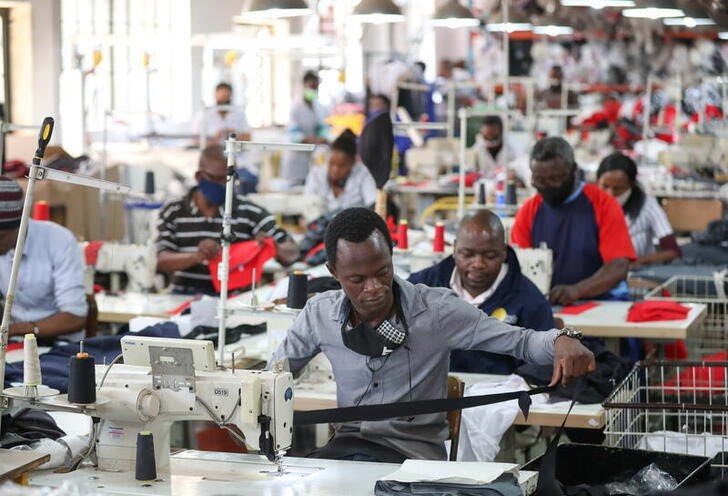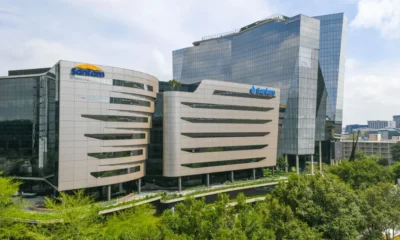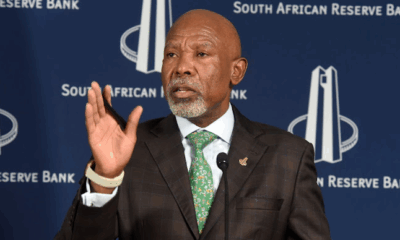Business
South Africa’s Manufacturing Slips Back Into Contraction, Raising Alarms for 2025 Growth

A short-lived recovery fades
The flicker of hope South Africa’s manufacturing sector showed in July has quickly dimmed. According to the latest Absa Purchasing Managers’ Index (PMI), released this week, the index slipped by 1.4 points to 49.5 in August, falling back below the 50-mark that separates growth from contraction.
For industry players, it feels like déjà vu. After nine straight months of contraction, July’s expansionary reading raised cautious optimism. But the August dip underscores the fragility of South Africa’s industrial backbone.
What’s dragging the sector down?
The PMI, compiled by the Bureau for Economic Research, paints a sobering picture. New sales orders collapsed by 8.5 points to 47.4, marking the sharpest drop since late 2024. Exports continue to struggle under the weight of global tariffs, while domestic demand remains weak in a sluggish economy.
The business activity index also fell to 45.8, extending its contraction streak to ten months. Even the improvement in the supplier deliveries index turned out to be misleading: faster deliveries reflected falling demand, not supply chain efficiencies.
As Investec economist Lara Hodes put it, “Respondents refer to tariffs hurting exports, even if they themselves are not directly impacted; some mention knock-on implications of impacted clients.”
Jobs under strain
One small silver lining came from the employment index, which rose by 5.2 points to 48.9 in August. But the number remains below 50, meaning the sector is still shedding more jobs than it creates. For factory workers and their families, this is a grim reminder that recovery on paper doesn’t always translate into livelihoods on the ground.
It’s now been 18 months since manufacturing employment was last in positive territory, reflecting a sector unable to absorb labour even when conditions briefly improve. As Hodes notes, “A lift in confidence, driving investment and accordingly growth, is imperative to lift employment numbers.”
A volatile global backdrop
South Africa’s manufacturers are not struggling in isolation. Globally, trade tensions and higher tariffsespecially from the United States, have rippled through supply chains. For exporters, this has meant lost contracts and tighter margins, while domestically, cheaper imports are squeezing local producers.
Professor Raymond Parsons of North-West University Business School says the PMI adds to the “mixed signals” coming from the economy. While the index points to contraction, other high-frequency data suggest South Africa’s GDP may still achieve around 1% growth in 2025. But he warns that global uncertainty could easily derail that outlook.
A currency lifeline, but not enough
There were a couple of bright spots in August. The purchasing price index eased slightly to 58.5, suggesting a modest relief in input costs. Meanwhile, the rand held strong, trading below R18 to the dollar and peaking at R17.40/$ mid-month. This offered some cushion for importers, even as exporters continued to battle tariffs.
Still, for manufacturers hoping for stability, currency strength and marginally lower input costs are not enough to counter the weight of falling orders.
The bigger picture
For ordinary South Africans, the PMI might seem like an abstract number, but it’s a critical signal. A contracting manufacturing sector means fewer jobs, weaker exports, and reduced tax revenuespressures that ripple into households, from higher food prices to slower service delivery.
Social media reactions this week captured that frustration. One Johannesburg-based entrepreneur wrote on X (formerly Twitter): “PMI down again. How do you build factories when the system is stacked against youEskom, tariffs, imports? This isn’t just numbers, it’s our future.”
Where do we go from here?
The outlook remains a mixed bag. Absa’s business expectations index, which measures confidence six months out, rose slightly to 56.8, suggesting some resilience among manufacturers. But whether that optimism materialises will depend on bigger shifts: stabilising energy supply, easing trade tensions, and finding ways to shield local industry from imports.
For now, the PMI’s latest dip is a sobering reminder that South Africa’s recovery will not be linear. The country’s factories, once the backbone of its economy, are still waiting for a breakthrough.
{Source: IOL}
Follow Joburg ETC on Facebook, Twitter , TikTok and Instagram
For more News in Johannesburg, visit joburgetc.com



























